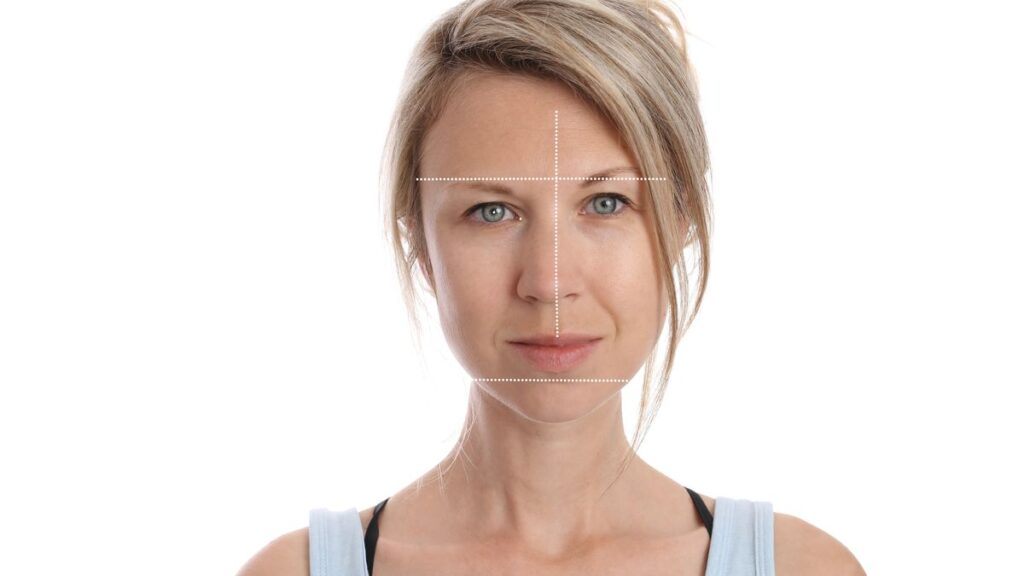Face Shape Myths: Common Misconceptions Debunked
Face shapes have long been a topic of fascination in beauty, fashion, and even psychology. Many people believe that the shape of their face determines how attractive they are, which styles suit them best, and even how others perceive them. While face shape does play a role in aesthetics, numerous misconceptions about face shapes have led people to make unnecessary beauty adjustments or feel insecure about their natural features.

But how much of what we hear about face shapes is actually true? Do round faces really make people look heavier? Is an oval face the “perfect” shape? Can someone change their face shape with the right haircut or makeup? These are just a few of the common myths that circulate, often without scientific backing. In this article, we will separate fact from fiction, providing expert insights to help you embrace your natural beauty with confidence.
1. Myth: Round Faces Are Less Attractive
One of the most damaging misconceptions is that round faces are less attractive because they lack defined angles. In reality, beauty is subjective, and round faces have unique features that many find incredibly appealing. Celebrities like Selena Gomez and Leonardo DiCaprio have round faces, yet they are widely admired for their looks.
Expert stylists emphasize that a round face offers a youthful and soft appearance, which is highly desirable. Strategic makeup techniques, such as contouring along the cheekbones, and the right hairstyles, like layered cuts, can enhance the natural symmetry of a round face. Rather than being a flaw, a round face can actually exude warmth and approachability.
2. Myth: Only Oval Faces Are Ideal for Beauty Standards
The idea that an oval face is the “perfect” shape is outdated and misleading. While it’s true that oval faces are often seen as versatile due to their balanced proportions, that does not mean other face shapes are less attractive. Beauty trends evolve, and different cultures appreciate different features.
For instance, in some Asian cultures, heart-shaped faces with prominent cheekbones are seen as highly desirable, while in Western beauty standards, a defined jawline (often found in square or diamond-shaped faces) is praised. Every face shape has its unique charm, and personal confidence plays a far greater role in attractiveness than facial proportions alone.
3. Myth: Heart-Shaped Faces Are the Most Versatile
Many believe that heart-shaped faces can pull off any hairstyle or makeup look effortlessly. While it is true that heart-shaped faces often have striking cheekbones and a well-defined structure, they still require balance when it comes to styling.
For example, a high forehead—a common feature of heart-shaped faces—may benefit from side-swept bangs or soft layers to create symmetry. Likewise, contouring the chin can help balance a sharper jawline. While heart-shaped faces do offer versatility, no face shape is universally perfect for all styles without some adjustments.
4. Myth: You Can Change Your Face Shape with Makeup or Haircuts
A common misconception is that the right hairstyle or makeup technique can completely change face shape. While strategic contouring and haircuts can enhance or soften features, they do not alter bone structure.
Makeup artists use shading and highlighting techniques to create the illusion of certain shapes, but once the makeup is removed, the natural structure remains the same. Similarly, layered haircuts can add the illusion of width or length, but they do not physically alter the face shape. Instead of trying to change one’s face shape, the focus should be on enhancing natural beauty with complementary styles.
5. Myth: Face Shape Determines Personality Traits
Some claim that face shape is linked to personality traits, suggesting that square-faced individuals are strong-willed, while round-faced people are more approachable. This myth stems from outdated physiognomy—the practice of judging character based on facial features—which has no scientific basis.
Personality is influenced by a combination of genetics, environment, experiences, and upbringing. No study has conclusively linked face shape to temperament, leadership ability, or intelligence. While some people enjoy reading about face shape analysis for fun, it should never be taken as a serious assessment of character.
6. Myth: Diamond Faces Look Too Harsh
A diamond face shape is characterized by prominent cheekbones, a narrow forehead, and a pointed chin. Some believe this creates a severe or harsh look, but in reality, this face shape exudes elegance and structure.
Celebrities like Megan Fox and Johnny Depp have diamond-shaped faces, and their features are often considered striking. The key to softening this shape is balance—hairstyles with volume at the crown and blended makeup techniques can enhance the natural beauty of a diamond-shaped face without making it appear overly sharp.
7. Myth: Square Faces Should Always Have Soft Hairstyles
It’s often said that square faces should avoid straight lines or angular hairstyles because they emphasize the already strong jawline. While softer styles can be flattering, square faces can also pull off structured looks beautifully.
For example, sleek, straight bobs or side-parted hairstyles can highlight the face’s natural symmetry rather than fight against it. The key is in finding what works for individual preferences rather than following rigid beauty rules.
8. Myth: Longer Faces Always Look Older
A long face shape is sometimes associated with aging due to its elongated proportions. However, this is not necessarily true. Many factors contribute to perceived youthfulness, including skin quality, facial volume, and expression.
Makeup techniques like applying blush horizontally rather than vertically and choosing fuller hairstyles can create a more balanced look. Emphasizing the eyes and lips can also bring attention to the central features rather than the length of the face.